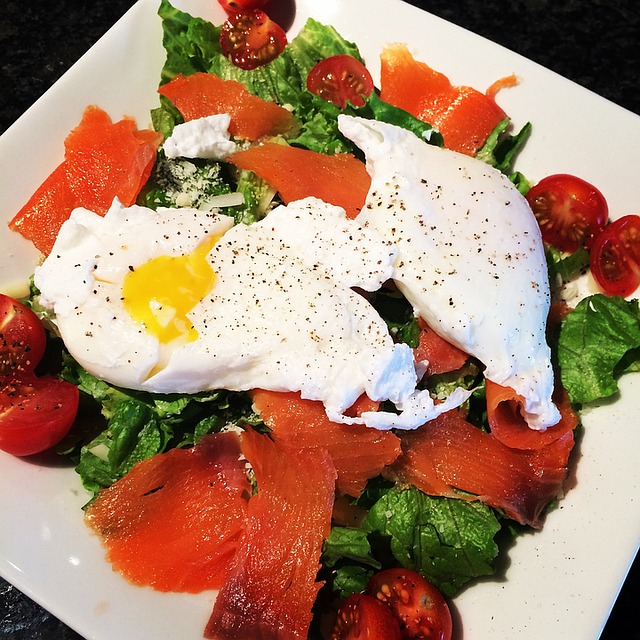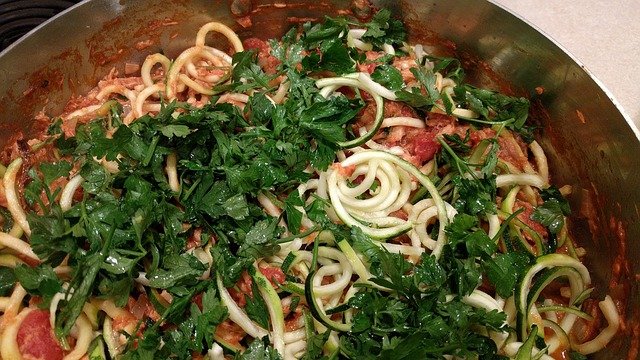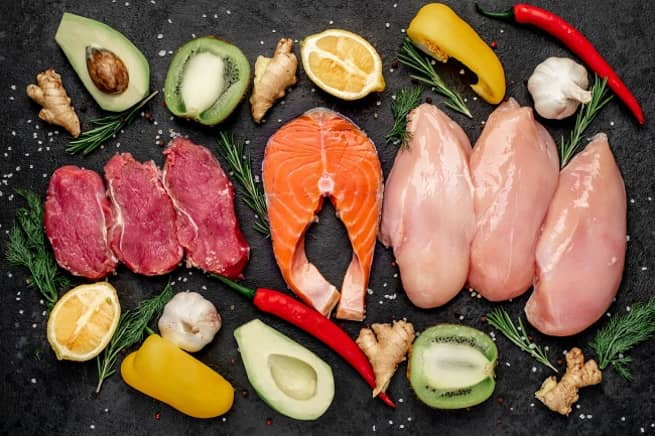
Dr. Loren C. Cordain, an expert in nutrition and exercise physiologicallogy, is a strong advocate of Paleolithic eating. There are many misconceptions about the Paleolithic lifestyle. Let's look at the myths associated with this diet to see why it is important to eat healthy foods. These are some of the most popular myths surrounding this diet.
Dr. Loren Cordain
Dr. Loren Cortain is a widely recognized authority in human evolution. He has been on the front page at The New York Times and Wall Street Journal as well as Dateline NBC. He is also a world-renowned expert on the natural human food. He has written more than 100 peer-reviewed scientific papers on the subject, and has conducted groundbreaking research on the health benefits of eating food from our Stone Age ancestors.
Dr. Cordain studies the evolutionary and anthropological basis of diets. Many of his publications are concerned with the nutritional compositions of wild animals and plants that were eaten by early human beings. He is an internationally recognized expert in Paleolithic diets. He has also lectured extensively about the topic. His books on the topic are widely read and popular. Read Dr. Cordain's biography to learn more about his work.
His research

Loren Cordain, a professor at the University of California, Berkeley discovered that diet is linked to certain diseases of modern civilization. Stone Age people ate less sodium (and potassium) than modern-day diseases. In the same way, Middle East residents ate more fruits & vegetables. This may account for some of the modern diseases. If diet is only a part of the problem, then why haven’t we been eating more fruits & vegetables?
The Paleo diet, which discourages cereals, whole grains, legumes, dairy, processed food, and vegetable oils, is one of the most popular health movements today. Researchers have repeated the same recommendation. Paleo diets have been shown to be more beneficial than conventional diets for improving your immunity system and overall health. Although Dr. Cordain’s research doesn’t prove that humans could survive without these foods entirely, many can still benefit from the health benefits.
His book
If you want to understand the science behind the Paleolithic diet, you need to read this book. American scientist Loren Cordain specializes in exercise physiology and nutrition. His book Eat to Live, which he wrote, is the first to be published by a leading Paleolithic nutritionist. Cordain's methods may be questioned by some, but there are numerous scientific studies that back him up.
Loren Cordain, a Colorado State University professor, is one of the most respected experts in nutrition and exercise physiologicallogy. The Paleo Diet was developed by Cordain and other world-renowned scientists. This is the debut book by one the founders of the fad diet. In the book, he explains how the Paleo Diet changed our lives. This book is your chance to transform your diet.
His opinions on nutrition

Dr. Cordain has made a significant contribution to modern health through the science and practice of diet. He holds a doctorate in health from the University of Utah. Since 1982, he has been a Colorado State University professor. He has been featured on Dateline NBC as well as the Wall Street Journal and the New York Times. He is widely regarded by the world's leading authorities on natural diets.
Cordain offers valuable insights into the benefits of this lifestyle by taking a look at the history of paleolithic diets. The Paleo diet was first introduced to the public by Dr. Boyd Eaton. It has been one of the most popular diet trends in recent times. Dr. Cordain continues his research on the health benefits of the Paleo diet for all ages, even children. He also addresses the importance of legumes, dairy, as well as carbohydrates and reveals the truth about what our bodies were made to eat.
His critics
Criticians of Loren cordain’s Paleo Diet use a variety of facts and examples to prove that it is not healthy. While lean meat contains a high proportion of protein, this diet is devoid of essential nutrients such as calcium, salt, and folic acid. In addition, it does not provide the body with protective nutrients like vitamin A and omega-3 fatty acids.
FAQ
What should a beginner cook start with?
Beginners should begin cooking simple dishes like soup, pasta, and rice. A recipe book or a YouTube video can help you learn how to cook. Cooking is fun when you do it with someone else. Cooking together is fun with family members or friends.
Can I learn how to cook together with my children?
Yes! Children love to help in the kitchen. It's fun and teaches kids responsibility as well as teamwork. From washing vegetables to chopping onion, children can help. If your children follow safe practices when handling knives, they will enjoy helping you cook.
How can I learn more about cooking?
Cooking classes are available throughout the country. There are many schools that offer courses in pastry, baking, and wine tasting. If you're interested in learning more about baking, you can either enroll at a community college or vocational school. Or you can attend a private class.
Do I need special equipment to cook?
To learn to cook, you don’t need to have any special equipment. However, it can be easier to use the right tools. For example, you could use a knife instead of a fork to eat pasta or a whisk instead of a hand mixer to whip egg whites into stiff peaks. It makes cooking much easier and quicker.
Statistics
- The median pay for a chef or head cook is $53,380 per year or $25.66/hour, according to the U.S. Bureau of Labor Statistics (BLS). (learnhowtobecome.org)
- under 10 Kids have been taught that there is special food just for them, and Fiese says that 10 percent of kids will throw a tantrum if they don't get the food they want. (washingtonpost.com)
- On average, chefs earn $58,740 a year, according to the BLS. - learnhowtobecome.org
External Links
How To
How to make a perfect eggroll
Omelets have always been a favourite food to eat for breakfast. How do you make them perfect? I've tried many different methods and recipes, but none of them seem to work! So today, I want to share some tips and tricks with you so you can make your own delicious and fluffy omelets every morning.
We should first know that eggs are very temperamental ingredients when making omelets. You must get them fresh, organically, and keep them cold until you cook. If you don't keep them cold enough, the whites won't form properly, and the yolks will break down too much and become runny. This can make your omelets look bizarrely colored. If you're going to cook them immediately, it is best if the eggs are still warm.
Another tip is to separate each egg before adding them to the saucepan. The yolk and white should not be mixed together as this can cause the omelet's curdle.
The egg can burn if it is placed directly on the stovetop. Instead, put the egg in the microwave for 10 seconds before putting it into the pan. The microwave heat cooks your egg just right, without it becoming too soft.
Next, let us talk about how to mix the eggs. Mixing eggs together is important. You need to beat them well. To do this, grab the bowl of the mixer and turn it upside down. Next, shake the bowl vigorously. This will whip the air around the bowl and mix the egg well.
Now comes the fun part - pouring the milk into the mixture. Mix half of the milk with the eggs. Then fold the eggs in half into the remaining milk. Don't worry if there are still streaks of egg visible; these streaks will disappear once you flip the omelet.
After folding the eggs fold the pan onto medium heat. When the oil starts to hot, wait for the pan to cook. When the oil is hot enough, add 1/4 cup butter to the pan. Stir it around until the butter covers the entire pan. The lid should be carefully opened. Sprinkle salt in the pan. The salt will help to prevent the omelet's sticking to the pan.
Once the omelet has formed completely, cover the pan and let it set for a few minutes. Flip the omelet upside down or with a spatula. Cook the other half for another minute. Remove the omelet from the pan and serve immediately.
This recipe works best with whole milk, but skimmed milk also works.